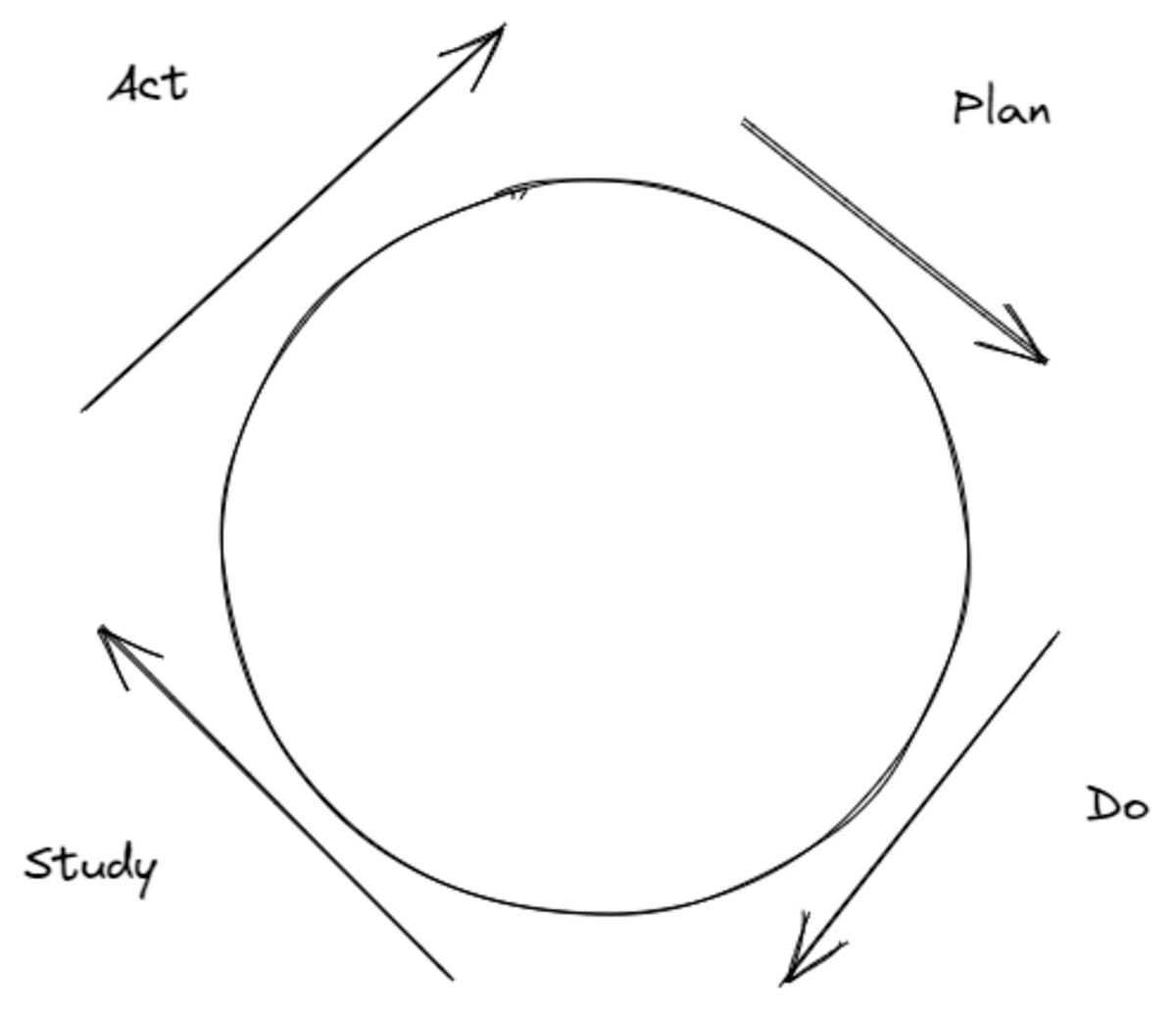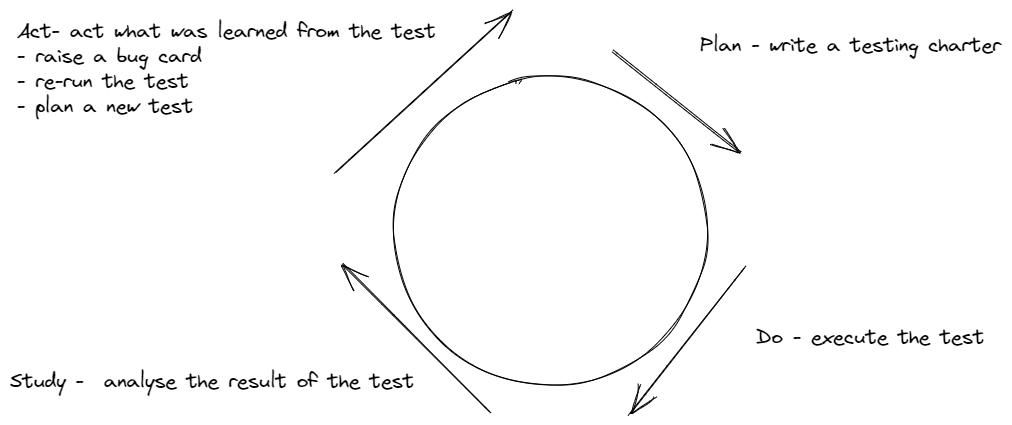What will come after “agile”?
Mike Harris
Posted On: November 4, 2022
![]() 18822 Views
18822 Views
![]() 8 Min Read
8 Min Read
I think that probably most development teams describe themselves as being “agile” and probably most development teams have standups, and meetings called retrospectives.There is also a lot of discussion about “agile”, much written about “agile”, and there are many presentations about “agile”. A question that is often asked is what comes after “agile”? Many testers work in “agile” teams so this question matters to us.
Before we can consider what comes after agile we need to consider what agile is. Agile is an iterative and incremental development methodology. Agile teams develop software in iterations and each iteration makes an increment toward the team’s goal. An agile team can decide, after an iteration or two, that the goal they are working towards should be changed and start to work on a new goal. Working iteratively makes the team agile as it can change direction quickly and easily. There are several agile methodologies and one of the most widely used methodologies is scrum.
What is agile?
When thinking about how to define what agile is we tend to be drawn to the Agile Manifesto which was created in 2001, but there were agile ways of working before the “Agile Manifesto”. The earliest Iterative and incremental development I found was at Bell Telephone labs in the 1930s. Walter Shewhart was an engineer at Bell Telephone Labs In his lectures in the 1930’s he introduced the concept of a straight-line, three-step scientific process of specification, production, and inspection[1]. He went on to revise this idea into a cycle[2]. The creation of this cycle has been described as part of the evolution of the scientific method[3] and it became known as the Shewhart Cycle. The cycle is shown in the diagram below:

The cycle is sometimes known as the Plan-Do-Study-Act-Cycle. A team using the Shewhart Cycle will Plan a change or test, The team will then Do, which means to carry out the change or test. Then the team will Study the results of the change or test to consider what they have learned before Acting on what they have learned. The team will then repeat the cycle and move onward.
W. Edwards Deming said that the cycle is a helpful procedure to follow for the improvement of anything in production stage. He also said that at the end of a cycle the team might tear up the work that they had done previously and start again with fresh ideas and that doing this was “a sign of advancement”.
Deming said the reason to study was to “try to learn how to improve tomorrow’s product” [4] Sometimes the Deming Cycle is referred to as the Plan Do Check Act. Deming did not like replacing the word study with the word check as studying is an important part of the cycle. He felt that the word check was inaccurate because it meant to “hold back”. [3]
The Shewhart Cycle was included by Deming in his lectures to senior management in Japan in 1950, and the cycle went into use in Japan as the Deming Cycle [4]
What is Deming cycle?
The Deming Cycle has also been described as the Deming Wheel as it just rolls on without a beginning or an end. All four parts of the Deming Cycle can be drawn inside a circle as below. This means that the four parts of the cycle are related to one another and that there is no hierarchy, as can be seen in the diagram below:

Scrum is one of the most widely used agile methodologies, and Jeff Sutherland, one of the co-creators of scrum, has written that the Deming Cycle is how scrum development is done[5] He also says that retrospectives are the “check” part of the “Plan-Do-Check-Act cycle”, and says that it is important to get the team to change and improve their process by moving on to the act part of the cycle. It is useful for software testers that retrospectives were designed to be used in this way as we want to help the teams we work with to improve quality. Testers can use retrospectives to raise issues that help to improve quality. Sutherland says that he trains people to use Scrum by asking them to use the Deming Cycle to build paper airplanes and that by the third iteration they are making much better paper airplanes.
The Deming Cycle is the heart of agile as it is a cycle that enables teams to change and improve quickly. The cycle enables change to be made at each iteration of the cycle. However, is this how agile is understood? Do we sometimes work in teams that describe themselves as “agile” but do not use The Deming Cycle? Is “agile” sometimes described through its ceremonies rather than through using the Cycle? Are teams using “agile” for continual improvement as Deming and Sutherland recommended?
New ideas, such as Jobs to be Done, continue to be influenced by the Deming Cycle. Alan Klement describes the system of progress in Jobs to be Done as a cycle and says that his cycle is not an original idea as it comes from the Deming Cycle.[6]
Lean has also been influenced by the Deming Cycle. Lean is an American description of Japanese production systems and comes from a study by MIT[7]. The Toyota Production System was of special interest in the study. Deming worked in Japan after World War Two where he helped to rebuild the Japanese economy. Jeffrey K. Liker says “that the Deming cycle embodies the learning cycle in the Toyota Production System“. [8]
Teams, and testers, can develop their understanding of the cycle by reading the books in the references below, by using the resources of the Deming Institute, and by using the Deming Cycle.
Teams can learn to use the cycle by planning an initiative, then carrying out the planned work or test, then studying the result of their work, and then acting on what they learned before repeating the cycle.
Testers can help their teams to gain an understanding of the Deming Cycle by using plan-do-study-act for testing. When we test we plan the test, for example, we write a testing charter, then perform software testing, then we study the result of the test, and then act on the result as shown in the diagram below:

Teams should not be put off by the Deming Cycle creating a new structure for their team. The Deming Cycle creates a new structure for a team because a team using the Deming Cycle must plan first, then do the work or test that they have planned, then study the effect of the work or test, and then act on what the team has learned. Using the Deming Cycle can sound demanding as it places a new structure on the team. However, all teams have structures that place constraints on them. If a team always has its planning meeting on a certain day of the week this practice places a constraint on the team. How often a team releases its work also puts a constraint on the team. If a team releases once a month then that monthly release will force the team to work towards that release. If a team releases many times a day with continuous delivery then that will create a different constraint for the team. All teams want to improve how they work and improve their product, and they will find that using the Deming Cycle will help them to improve their processes and product.
Undoubtedly there will be something after “agile”. It will have a new name and I guess it will have to have new “ceremonies”. However, will the Deming Cycle be replaced by what replaces agile?
The Deming Cycle is a profound philosophical insight that has been used by engineering teams to improve quality for nearly one hundred years and is continuing to influence new ideas. It seems unlikely that the Deming Cycle will be replaced by what comes after agile because it was so innovative, so useful, and is still being used after so many years.
It would be great if the new way of working that comes after agile created a deeper understanding of the Deming Cycle, as this would help teams to learn, improve how they work, and improve the products they make.
References
[1] Walter Shewhart Statistical Method From the Viewpoint of Quality Control
[2] Craig Larman and Victor R. Basili Iterative and Incremental Development: A Brief History”
[3] Ronald D. Moen and Clifford L. Norman Circling Back, Clearing up myths about the Deming cycle and seeing how it keeps evolving”
[4] W. Edwards Deming Out of the Crisis
[5] Jeff Sutherland The Art of Doing Twice the Work in Half the Time
[6] Alan Klement When Coffee and Kale Compete
[7] Alan Altshuler, Martin Anderson, Daniel Jones, Daniel Roos and James P. Womack The Future of the Automobile
[8] Jeffrey K. Liker The Toyota Way
Further Learning:
demingNext eLearning
W. Edwards Deming Out of the Crisis
W. Edwards Deming The New Economics
Got Questions? Drop them on LambdaTest Community. Visit now














